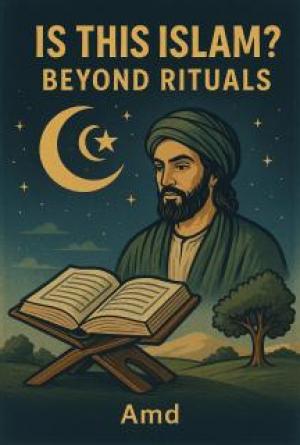The Polymorphy of Ancient Judaism
Met ̣at ̣ron’s own polymorphy has been well remarked by scholars already.104
What I am trying to bring out in this rereading of the archive is that Met ̣at ̣ron is the site that marks the polymorphy of ancient and medieval Judaism. Some of the components of this argument, nay many of them,
can be found in bits and pieces in earlier work. What I hope to have added to this conversation, is a fuller emphasis on the role of Dan 7 and of the multiple and overlapping conversations taking place across the broad spectrum of Jewish religious imagination, a spectrum that no longer will allow talk of separate (even if equal) Judaisms.105 The idea of polymorphous Judaism as a single cultural-religious system tends to shift the way that the question of the history of Judaism can be asked even more than it does the way that it might be answered. One doesn’t ask from this standpoint whether this or that Jewish text influenced the Gospels, nor whether or not a particular text is or is not “Christian” or Jewish, apocalyptic, mystical, or rabbinic but rather the ways that we can see, increasingly 103) Idel, Ben, esp. 595. See also D. Abrams, “The Boundaries of Divine Ontology: The Inclusion and Exclusion of Met ̣at ̣ron in the Godhead,” HTR 87 (1994): 291-321.
104) Stroumsa, “Form(s),” 281; E. R. Wolfson, Through a Speculum That Shines: Vision and Imagination in Medieval Jewish Literature (Princeton: Princeton University Press, 1994), 39 and see G. Stroumsa, “Polymorphie divine et transformations d’un mythologéme: l’‘Apocryphon de Jean’ et ses sources,” VC 35 (1981): 412-34.
105) The same mistake would be made were we to consider Kabbala and Halakhic Codes evidence for different Judaisms in the Middle Ages or Early Modern period. See R. J. Z.
Werblowsky, Joseph Karo, Lawyer and Mystic (Scripta Judaica; Oxford: Oxford University Press, 1962).
360
D. Boyarin / Journal for the Study of Judaism 41 (2010) 323-365
see, the commonalities of tradition histories that cross over these borders including those that would only later harden into separate “religions.”106
Rather, for example, than thinking of Enochic and Mosaic Judaisms (or priestly and pharisaic Judaisms),107 we need to think of converging and diverging strands and moments, of eddies and currents, whirlpools and backwaters, in the vast river of the religious practices and beliefs of the ethnic group that we have come to call Jews. We will have to adopt a family-resemblance or polythetic approach to the very construction of the category Judaism, and, even then understand that this is at best a heuristic category.108 Crucial in this revised voyage of exploration is the study of the Enochic literature and Enoch traditions from the early Roman period Parables of Enoch right through into the late-ancient 3 Enoch, which I propose that we read as an integral, if not fully integrated, tributary of the river of “mainstream” Judaism (by which, it should be clear by now, I don’t mean rabbinic Judaism).
It will not do, any longer, as I hope I have shown, to draw sharp—or even blunt—distinctions between types of Judaism as we proceed on our study of the histories of ancient Judaism. No more “Judaisms” then but an archaeology of ancient Judaism that considers the highways and
byways, the stream and the eddies, as all part of one non-triumphalist flowing flux of religious creativity.
Appendix: A Contraindication
In a recent publication (which he was kind enough to show me before it appeared), Alon Goshen Gottstein has fundamentally and directly challenged the assumptions on which much of my analysis is based as exposed 106) G. Hasan-Rokem, “Narratives in Dialogue: A Folk Literary Perspective on Interreli-gious Contacts in the Holy Land in Rabbinic Literature of Late Antiquity,” in Sharing the Sacred: Religious Contacts and Conflicts in the Holy Land First-Fifteenth Centuries CE (ed.
G. Stroumsa and A. Kofsky; Jerusalem: Yad Ben Zvi, 1998), 109-29.
107) Pace, e.g., R. Elior, The Three Temples: On the Emergence of Jewish Mysticism (Portland, Or.: Littman Library of Jewish Civilization, 2004).
108) This is, in part, a response to one of the anonymous readers of this text who suggested that my thinking dissolves the category “Judaism” entirely. It does do so on a “checklist”
version of categorization but hardly on a family-resemblance model. For the latter, see C. Kronfeld, On the Margins of Modernism Decentering Literary Dynamics (Contraversions; Berkeley: University of California Press, 1996) and discussion in Boyarin, Border Lines, 22-26, but see too D. Boyarin, “Rethinking Jewish Christianity: An Argument for Dismantling a Dubious Category (to Which is Appended a Correction of My Border Lines),”
JQR 99 (2009): 7-36.
D. Boyarin / Journal for the Study of Judaism 41 (2010) 323-365
361
in earlier versions of the present argument.109 I will accordingly take some space here to engage his arguments in, I hope, a constructive way and from him and from me, the matter will be clarified (at least somewhat).
In particular I want to show some ways in which Goshen-Gottstein seriously misconstrues my argument, in hopes that in this context I shall be able to make it clearer and more perspicacious. Goshen-Gottstein strongly assents to Steven Fine’s methodological point of departure: “In my own work, I search out every other possible interpretation and weigh these carefully before ultimately accepting or rejecting the Christian influence model.”110 Goshen-Gottstein, for his part, simply assents to this practice as good “careful” methodology, and, moreover, describes it as value and emotion free, as opposed to methods that assume alleged “Christian influence.” As he writes, “it should be acknowledged that constructing a model of Jewish-Christian relations that minimizes contact and maximizes the recognition of parallel activities accords with the methodological call for care and minimizing contact sounded above by Steven Fine.”111 It is totally mysterious to me why a view that seeks to “minimize contact”
between “Jews and Christians” is ipso facto more “careful” than a view that seeks to understand in a more complex way the evident fact that
“Christians” simply were Jews at least in the beginning (and in some places for longer than in other places) as well as taking into account the palpable evidence for at least some direct contact later on. Perhaps it is the case, as I would suggest, that no work in a field like this (as in many others but perhaps more so here) is value-free or more conservative or careful than others.112 If, as I suppose, and try to show in my book,113
there is significant evidence for ongoing contact between the groups that latterly call themselves Jews and Christians, then methodological care would dictate a search for the effects of that contact and not an aprioristic polemical denial of them.114 The question that needs to be addressed is the plausibility, given all that we know, that this interpretation or that one 109) Goshen-Gottstein, “Jewish-Christian Relations.”
110) Cited ibid., 20.
111) Ibid., 26.
112) It is remarkable that after imputing a methodological disinterest to himself and his mentor, Steven Fine (in contrast to the alleged ideological biases of his interlocutors), Goshen-Gottstein goes on for several pages to detail the gains for contemporary Jewish-Christian relations of his claim for parallel contact-free religious developments of “the two communities.”
113) Boyarin, Border Lines.
114) Pace Goshen-Gottstein, I hardly think the Rabbis could ever be characterized as
“disinterested” (“Jewish-Christian Relations,” 27); perhaps he meant “uninterested.”
362
D. Boyarin / Journal for the Study of Judaism 41 (2010) 323-365
is a better fit for the texts, to which question I now turn more directly.
Goshen-Gottstein’s case study in the article is specifically on the topic of the present essay of mine and explicitly directed against my views and methods, so it is imperative that I engage it in this context.
Goshen-Gottstein has somehow misread my work to imply that the
issue of “Two Powers in Heaven” “stands at the heart of the parting of the ways.”115 My argument is entirely opposite from such a notion, since I am suggesting strenuously that binitarian/ditheistic notions of godhead are a shared retention between later Jews and Christians of an earlier theological approach and not one formed in one of the later communities and
either accepted or rejected by the other one. Where Segal imagines, as I have said above, actual Others with which the Rabbis are polemicizing, I am suggesting that this is one of the means by which rabbinic Judaism constructs its own religious identity by projecting elements of its own inherited religious traditions as being perilous encroachments from outside. (I did suggest that by naming those who did not believe in Two Powers as heretics, a figure like Justin was effectively producing Judaism as not-Christian and by naming Two Powers believers as minim, the Rabbis were doing the same favor for Christianity. Each was projecting an internal conflict outward; this has nothing to do with a “parting of the ways.”) Although Goshen-Gottstein claims to distinguish my approach
from that of Segal, in fact, he practically conflates them and thus
argues—in arguing against me—with a straw man.
This fundamental misunderstanding leads to all of the other misread-
ings of my position in his essay. He thus writes:
It is worth noting that while Segal explores a wide range of options, in his attempt to pinpoint the polemic, Boyarin seems to have narrowed the battle to one principle opponent, the Christians. I have not found in Boyarin’s work an account of why, in reconfiguring Segal’s earlier work, he limits its relevance to Christianity, while ignoring gnostics, whom Segal sees as serious contenders for the title of polemic partners in most of the rabbinic sources he discusses.116
The very terms in which this animadversion are couched makes clear
enough Goshen-Gottstein’s misconception. I have never claimed “polemi-115) Ibid., 30.
116) Ibid., 32.
D. Boyarin / Journal for the Study of Judaism 41 (2010) 323-365
363
cal” intent against an already given group in my discussion of this issue but rather offered as a hypothesis that it was the growing importance of the church as an institution in late antiquity that partly prompted a rabbinic rejection of the traditional readings of Dan 7 and the theological implications that they had produced, including the idea of a second
divine “person” if you will and his coming to earth in the form of the Messiah. This led, as I hope to have shown above, to some very labored—
even special pleading—interpretation of some biblical texts, labored interpretations that are explicitly marked within the rabbinic texts as being designed to eliminate the possible “misreading” of the biblical texts as conducing to “Two Powers in Heaven.”117 The conflict is internal, not with any already-given external group.118
117) Others of Goshen-Gottstein’s arguments are simply also the product of misunderstanding. He fails completely to understand my use of the term “energy” (ibid., 38), arguing that since there are only a relatively small number of occurrences of the term, “Two Sovereignties,” this does not constitute a major issue for the Rabbis. And further that since they occur nearly always in a hermeneutical context, this is just midrash as usual for the Rabbis and one cannot infer anything meaningful from it about the thoughts or concerns of the Rabbis engaged in the production of these midrashim (This is an overstatement of Goshen-Gottstein’s case but a fair enough inference, I think, from what he says). My original argument is, in fact, dependent on these being in hermeneutical contexts, since my point is that they were intended to deflect historically actual and plausible interpretations of the verses—and not, by any means, only or primarily by so-called Christians. I certainly do not see here evidence for an alleged “rabbinic tendency to explain phenomena that have their own conceptual evolution by appeal to polemics,” ibid., 39 n. 5, unless the very
“conceptual evolution” leaves the “unevolved” as targets for a polemical redescription as heretics, which is, of course, precisely my argument. Goshen-Gottstein seems to have the curious idea that these interpretations are not what he calls “eisegetical,” and, therefore no evidence for particular concerns on the part of the midrashists: “The fact is that the few sources that do employ the formula do so through exegesis, not through eisegesis; in other words, the formula is applied in a very reasonable and limited manner, in accordance with what seems to be its hermeneutical purpose, without in any significant way exceeding it”
(ibid., 40). This statement simply flabbergasts me. “The formula is applied in a reasonable manner,” means exactly what? That the biblical texts that seem to suggest the possibility of Two Sovereignties really do mean to counter that possibility. Or perhaps it means that there is a real danger of so “misunderstanding” these verses (but no-one—unaccount-ably—ever has, so we’d better make sure to suggest that possibility), and that when it says, for instance, “I am the Lord,” the purpose is to discredit that as yet totally unrealized danger of “misinterpretation.” Compare that with my simple reading to the effect that there are verses in the biblical text that suggest more than one divine figure in heaven, that some Jews (or many) had read them in this fashion, and that the Rabbis are producing labored interpretations to discredit such readings. The “energy” of which I speak is precisely the 364
D. Boyarin / Journal for the Study of Judaism 41 (2010) 323-365
I believe that this reframing of my intentions from the beginning,
perhaps more clearly articulated in the present article (I hope), obviates Goshen-Gottstein’s other supposed objections to my hypothesis, namely (1) the hermeneutical context of most Two Powers discourse among the Rabbis, and (2) the alleged objection that “Why, then, would the rabbis choose to confront Christianity by means of a formula directed at the wrong theological formulation of faith?,” namely binitarian rather than trinitarian.119 On my account, properly read, that the “polemic” is an inner-polemic directed against “Jewish” readings of the Bible and older Jewish theological traditions,120 which were never, of course trinitarian, various contortions of interpretation that are produced in order to discredit the “Two Sovereignties” interpretation of the given verses, viz “Don’t rebel” changed to “Don’t exchange” (admittedly in a context where Two Sovereignties is not explicitly mentioned but what does that matter?). This further addresses Goshen-Gottstein’s worry that when passages about Two Sovereignties do occur in tannaitic literature, it is in the midrashim and not the Mishna or Tosefta in which they appear. This can be answered easily with two answers. Perhaps the terminology, “Two Sovereignties” is a somewhat later invention, somewhere between the production of the Mishna and the tannaitic midrashim a hundred or so years later, or, more compellingly, one would precisely expect to see a hermeneutical argument in midrash and not in legal texts. It can hardly surprise Goshen-Gottstein that an important discussion about G-d would take place in hermeneutical contexts, can it?
I am not sure to what end Goshen-Gottstein intends his argument about “centrality.” I don’t believe that there is anything in my writing (Boyarin, “Two Powers”) that indicates that the question of Two Sovereignties was a constant concern of the Rabbis but only that the evidence of its usage suggests that when encountered, it was of sufficient concern that hermeneutical energy was deployed to displace it. I did, indeed, offer the hypothesis that this was at least in part, perhaps in large part, caused by a pressure to make clearer the distinction between the “minim” and “us” occasioned by the growing importance of Christianity as a powerful institution, a position not unlike Goshen-Gottstein’s own.
118) My own account is thus strikingly like Goshen-Gotttstein’s presentation of his own model, advanced by him as an alternative to mine. See below note 120. Incidentally, there is, in fact, little reason to even think that the Rabbis would have distinguished “Christians”
from so-called “gnostics,” since that term itself is a Christian heresiological category! See M. A. Williams, Rethinking “Gnosticism” : An Argument for Dismantling a Dubious Category (Princeton: Princeton University Press, 1996); K. L. King, What is Gnosticism? (Cambridge, Mass.: Belknap Press of Harvard University Press, 2003).
119) Goshen-Gottstein, “Jewish-Christian Relations,” 33.
120) Goshen-Gottstein’s suggestion that there is no polemic here at all runs aground on the explicitly marked polemical formulae within these texts, ibid., 35. On the next page, in fact, Goshen-Gottstein refers to these as “internal statements,” which is exactly my stance, as he would have realized had he read my work more carefully. Where there is a parting of the ways between me and Goshen-Gottstein is in his absolute denial that there were Jews, seemingly at any time, who actually entertained notions of a double godhead in
D. Boyarin / Journal for the Study of Judaism 41 (2010) 323-365
365
both of Goshen-Gottstein’s objections are adequately displaced (not refuted since I suggest that both objections are simply misdirected). To put a fine point on it, it is never, on my view, about “combating Christianity.”121
Indeed the force of my reading of the Rav Idi passage would entirely dis-appear if I had read it as being an attack on Christianity and not an inner-Jewish (or even inner-rabbinic) argument. In short, I agree generally with Goshen-Gottstein that the Rabbis were “fighting no battle [with Christianity] at all,”122 although this formulation involves an obvious exaggera-tion given the explicit attacks on Christianity that we find in the
Babylonian Talmud.123 I also totally agree with him that “One would seek in vain to identify to whom or against whom these texts are addressed, as there is no specific recipient.”124
connection with readings of Dan 7; this stance strikes me as simply an apologetic denial of the evidence before our eyes.
121) Ibid., 33.
122) Ibid., 34.
123) See P. Schäfer, Jesus in the Talmud (Princeton, N.J.: Princeton University Press, 2007) and my animadversions in D. Boyarin, “Nostalgia for Christianity: Getting Medieval Again,” Religion and Literature (2010).
124) Goshen-Gottstein, “Jewish-Christian Relations,” 36. Oddly, very oddly to me, at the very end of Goshen-Gottstein’s essay he shows that he has precisely understood my argument, namely that what was later named minut was once comfortably at home with Jewish monotheism and was somewhat arbitrarily excluded later on under the pressure of various circumstances: “Boyarin’s discussion is so helpful in showing us the arbitrariness of what is recognized as theologically acceptable,” ibid., 42. I am thus even more confused as to why he would identify my position with that of Segal, argue against me strenuously, and then come nearly precisely to my own position. Curiouser and curiouser. In any case, I hope here to have paid an old debt of lack of sufficient attention to his frequently brilliant work. Where, I think, we absolutely totally disagree is on our respective evaluations of Steven Fine’s challenge that we ought only look for contextual explanations of phenomena when all non-contextual explanations have been discarded.







